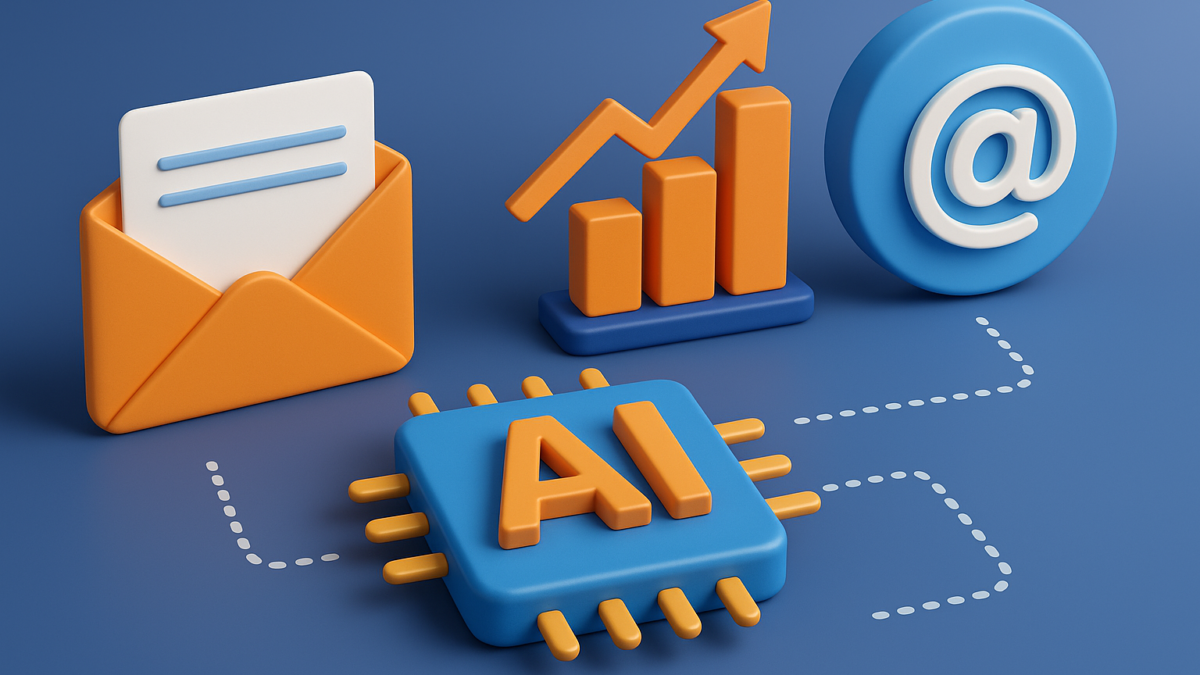Behavioral Triggers 2.0: How AI Is Rewriting the Rules of B2B Email Automation
Email marketing has always been about timing and relevance. For years, B2B marketers relied on basic triggers—such as sign-ups, downloads, or abandoned carts—to automate campaigns. But in 2025, Artificial Intelligence (AI) has taken behavioral triggers to an entirely new level.
Welcome to Behavioral Triggers 2.0, where AI doesn’t just respond to simple actions but predicts intent, personalizes engagement, and rewrites the rules of B2B email automation.
From Static to Intelligent Triggers
Traditional email automation triggers were rule-based:
- A user downloads a whitepaper → they get a follow-up email.
- A lead visits a pricing page → they receive a sales-oriented message.
While effective, these systems lacked the ability to adapt in real-time. AI-powered behavioral triggers go beyond static workflows to understand context, intent, and sequence of actions.
For example:
- AI can detect if a prospect visits your site multiple times but avoids the pricing page, signaling hesitation.
- Instead of sending the same generic follow-up, AI delivers a tailored nurture email with case studies addressing that hesitation.
This level of sophistication ensures higher engagement and better conversions.
Key Ways AI Is Transforming B2B Email Triggers
1. Predictive Engagement
AI analyzes historical and behavioral data to predict when a prospect is most likely to engage. Emails are sent at the perfect time for each individual, boosting open and click-through rates.
2. Intent-Based Messaging
Instead of reacting only to clicks or downloads, AI maps behaviors to purchase intent signals.
- Early-stage: Send educational resources.
- Mid-stage: Send ROI calculators or product comparisons.
- Late-stage: Send demo invitations or limited-time offers.
3. Hyper-Personalization at Scale
AI dynamically adjusts subject lines, content blocks, and CTAs based on:
- Industry
- Job title
- Past interactions
- Predicted interests
No two prospects receive the same experience.
4. Real-Time Adaptation
Behavioral Triggers 2.0 allow campaigns to pivot instantly. If a lead ignores three emails but suddenly engages with a webinar invite, the system automatically shifts the nurture path toward more in-depth content.
5. Multi-Channel Integration
Modern B2B buyers engage across email, LinkedIn, and company websites. AI synchronizes behavioral triggers across all channels, creating a seamless journey rather than disjointed touchpoints.
Why Behavioral Triggers 2.0 Matter for B2B Enterprises
In the competitive B2B landscape, attention is scarce and inboxes are crowded. AI-driven triggers help enterprises by:
- Improving lead quality: Engaging prospects based on actual buying signals.
- Shortening sales cycles: Delivering the right message at the right time.
- Increasing ROI: Optimized triggers reduce wasted effort and improve conversions.
- Strengthening customer relationships: Personalization builds trust and credibility.
According to Gartner’s 2025 Marketing Automation Report, companies using AI-driven email triggers see a 45% increase in engagement rates compared to those using static workflows.
Real-World Example
A B2B SaaS company replaced their rule-based email automation with AI-driven behavioral triggers in 2024. Results within six months:
- Email open rates: Increased by 38%
- Click-through rates: Improved by 52%
- Sales-qualified leads (SQLs): Doubled compared to their previous campaigns
This success came from tailoring content based on intent signals rather than treating every lead the same.
How to Get Started with Behavioral Triggers 2.0
Step 1: Audit Current Email Automation
Identify where your existing workflows rely on static rules and where AI can add predictive intelligence.
Step 2: Integrate AI-Powered Tools
Adopt platforms that support real-time data processing, intent analysis, and AI-driven personalization.
Step 3: Align Marketing & Sales
Ensure both teams define intent signals together so that AI triggers lead to qualified, sales-ready conversations.
Step 4: Test & Optimize Continuously
Set up A/B experiments on subject lines, timing, and personalization strategies to fine-tune AI performance.
Conclusion
Behavioral Triggers 2.0 mark a major shift in B2B email automation. By moving beyond simple actions to predictive, AI-driven engagement, enterprises can create smarter, faster, and more personalized customer journeys.
In 2025, success isn’t about sending more emails—it’s about sending the right email, to the right person, at the right moment.
Call-to-Action (CTA)
Ready to harness the power of AI-driven email automation for your business?
Explore iTMunch’s Email Marketing Services and discover how to maximize engagement, generate qualified leads, and boost ROI with Behavioral Triggers 2.0.
You May Also Like: The Future of Networking: Software-Defined Networks and Beyond





